The union of Sweden and Norway from 1814 to 1905 joined the two nations under a common monarch and foreign policy. It was the final step in a long period of Scandinavian unions.
Sometimes the path to true independence doesn’t exactly run smoothly. Geopolitics is, to borrow a phrase, a funny old game.
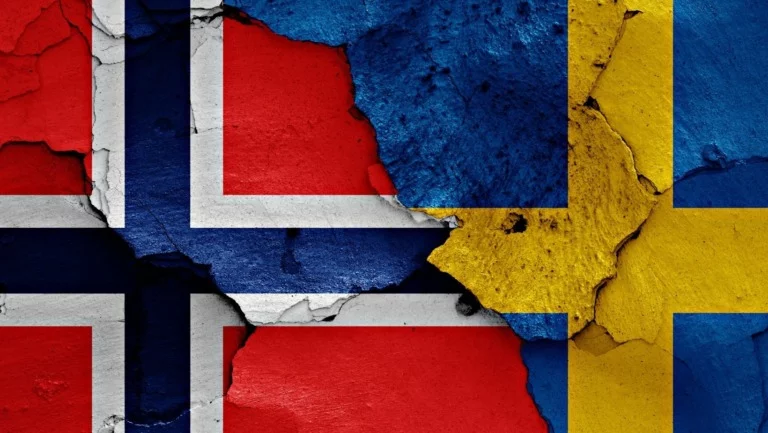
We know now that Norway is its own country but there were times in the not-too-distant past of Norwegian history where that was far from assured.
The end of Kalmar and the rise of Denmark-Norway
In the beginning there was the Kalmar Union. Okay, so Scandinavian history goes back a bit further than that. Politically the Kalmar Union is a good starting point. For over 100 years, Scandinavia was united under a single crown known as the Kalmar Union.
Eventually, Sweden went off in 1523 to become a major world power for a while. This left Denmark and Norway to their own devices. At the time, agriculture was the main source of wealth, leaving Denmark’s Southerly position at a distinct advantage.
This, combined with Denmark’s superior military might, made any hopes of Norwegian independence pretty much a fantasy. Put simply, Norway was neither strong enough nor rich enough to stand on its own.
The strengthening of Norway
Politically, the two countries remained reasonably separate. They had their own laws, currencies, and armies, and mostly had their own institutions. Initially an elective monarchy, in the mid-17th century the union became one of the most stringent absolute monarchies in Europe.
Read more: The Story of Denmark-Norway
People often think of the Industrial Revolution as being the birth of industry. It’s true the late 18th century marked a huge and irreversible shift in industry thanks to the advantages of, for example, steam power. But early industrialisation was taking place around the world well before then.
Norway, with limited farming opportunities, was one of those places. If you think of what Norway has a lot of – trees, rocks, and water – it’s hardly surprising that industry was the way to go.
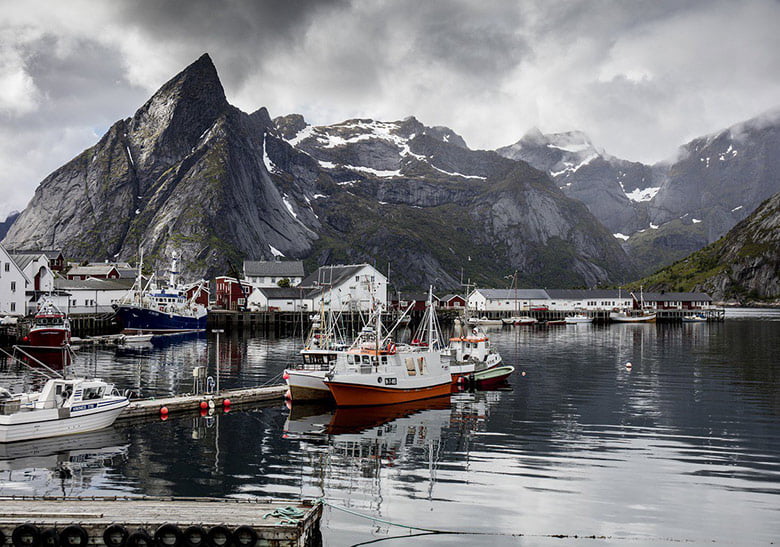
Starting in the 15th century, industry grew quite rapidly in the country. It was a great place for felling timber, mining natural resources and, most importantly, had a huge coastline facing West, opening easy access to Britain and the rest of Western Europe.
Over time, Norway grew in wealth and strength to become a much more equal partner in the union with Denmark. The feudal, agrarian economy of Denmark and the ‘modern’ industrial economy of Norway complemented each other well. Trade within the twin kingdoms was high and each was pulling its own weight.
Enter Napoleon
Napoleon's legacy is still felt throughout Europe to this day. The Emperor of France went on a vast expansion of French territory in the 18th and 19th centuries, culminating in rule over almost everything between the Atlantic in the West and Russia in the East.
Both Sweden and Denmark-Norway initially tried to remain neutral, not wanting to be drawn into a conflict they saw as nothing to do with them. They joined with Russia and Prussia in a union of armed neutrality. Britain, fearing the mighty Danish navy would eventually ally with France, decided to attack the Danish navy.
Read more: Fun Facts about Norway
On the second such attack, by trying to stop the thing they feared, the British effectively forced Denmark-Norway into an alliance with France after capturing their entire naval fleet an leaving them defenceless. Sweden, meanwhile, had allied with Britain, which meant Denmark-Norway had to declare war on Sweden.
Britain set up a naval blockade, severely disrupting contact between Denmark and Norway. Led by an army general, Prince Christian August of Augustenborg, Norway established a provisional government in Christiania (now Oslo). After centuries, Norway finally had a taste of independence and a decent test of its viability.
Sweden invaded Norway in the Spring of 1808 and Christian August successfully repelled them. This made him very popular in Norway and also, bizarrely, in Sweden where they chose him as Crown Prince and successor to the throne that was occupied by the decrepit and incapable Charles XIII.
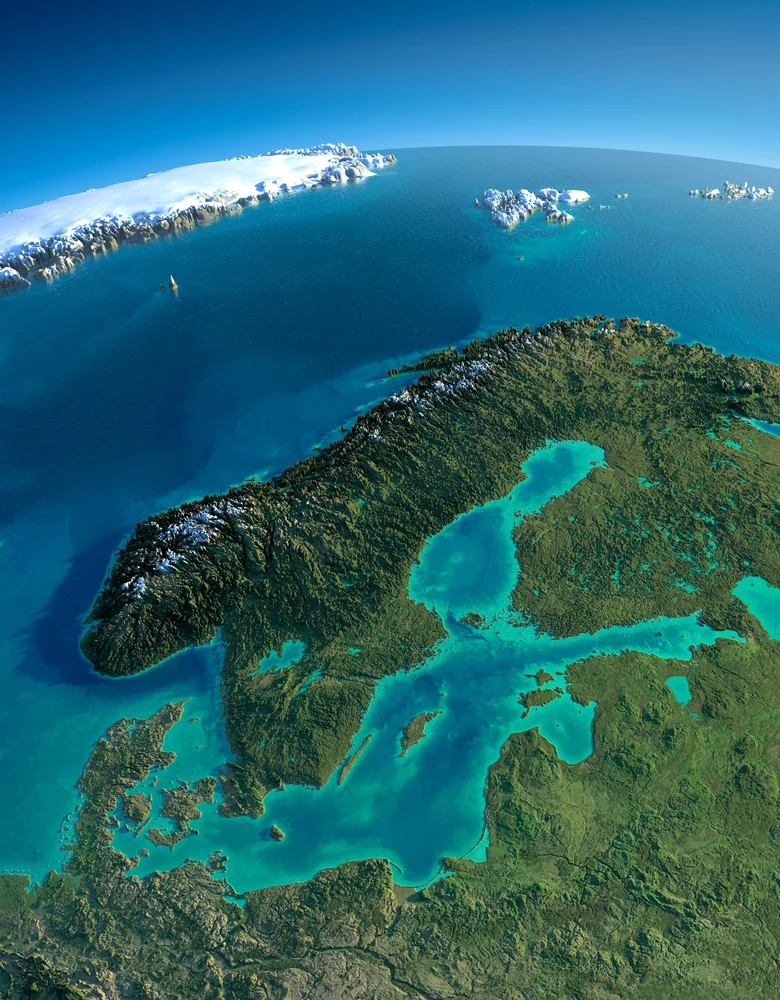
One important reason for the Norwegian success against Sweden’s invading force was that, at the same time, Russia invaded Finland which was then a part of Sweden. In 1809 Sweden was forced to cede the whole of Finland to Russia. Christian August ruled Sweden as Crown Prince for 6 months before dying suddenly. He was replaced by another odd choice, French general Jean Baptiste Bernadotte.
Sweden’s claim over Norway
Bernadotte’s entire plan was to soothe the pain of losing Finland by getting hold of Norway. He signed a secret treaty with Russia to oppose France. He then signed a Treaty with Britain offering to help with the war against France in return for Britain recognising his claim over Norway. Russia and Prussia both agreed to the same outcome and so Norway was no longer a country but simply a prize for victory!
His knowledge of the French military, and the combination of British, Prussian and Russian might, eventually brought the defeat of Napoleon and the end of the Napoleonic Wars and French expansion in Europe.
When the armies turned their attention to Denmark, it didn’t take much persuasion to get King Frederick to hand over Norway to Sweden. The Treaty of Kiel stated that Denmark would keep Iceland, the Faroe Islands and Greenland but mainland Norway would become a possession of the King of Sweden.
On January 18th, King Frederick VI of Denmark issued a letter to Norwegians releasing them from his rule. Denmark—Norway was officially over.
Norway fights back
Norway might have belonged to the Swedish King in the eyes of the rest of Europe, but no one had asked the Norwegians what they thought! The taste of independence while cut off from Denmark had shown that they could stand on their own.
Norwegian viceroy and hereditary prince Christian Frederik resolved to lead an insurrection against Sweden’s plan to steal the country from Denmark. He informed the King, who likely went along in secret while officially ordering the prince to surrender the border fortresses and return to Denmark.
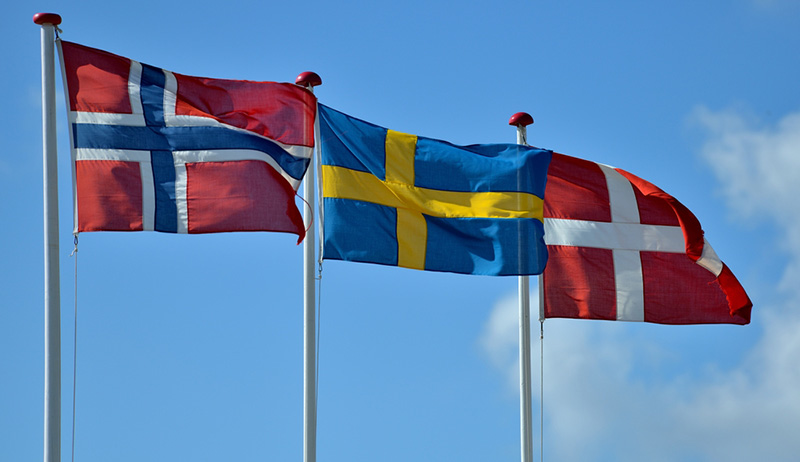
Instead, he defended the border and claimed the throne of Norway as rightful heir. When the news broke that Sweden had been officially ceded to the King of Sweden, there was outrage. Norway had no desire to be ruled from Sweden and rallied behind the bid for independence.
Christian Frederik was convinced by advisors that Norway’s bid for independence would be more likely to succeed if it was based on the right to self-determination of its citizens rather than the right of the prince as heir.
Read more: The Norway-Sweden border
He sent a delegation to London to try to argue the case for Norwegian independence with little success. Meanwhile, suspicion grew that the prince, a Dane, was secretly trying to reunite Denmark-Norway.
Constitutional convention
In April 1814, delegates convened at Eidsvoll to attempt to decide what course to pursue. The convention was broadly split between those who favoured independence with close ties to Denmark and those who favoured a loose union with Sweden. A vote was won 78-23 to pursue closer ties with Denmark.
The constitution was then put together. The delegation was chaired by a different person each week and the constitution was finally ready on May 17th and Christian Frederik was unanimously elected King. Norway celebrates May 17th each year as Constitution Day.
Christian Frederik made a triumphant entrance to Christiania on May 22nd. The guns of Akershus Fortress sounded a salute and there was a service held in the cathedral.
Of course, Sweden didn’t accept the Norwegian constitution and still believed that Norway belonged to the Swedish King as per the terms of the Kiel Treaty.
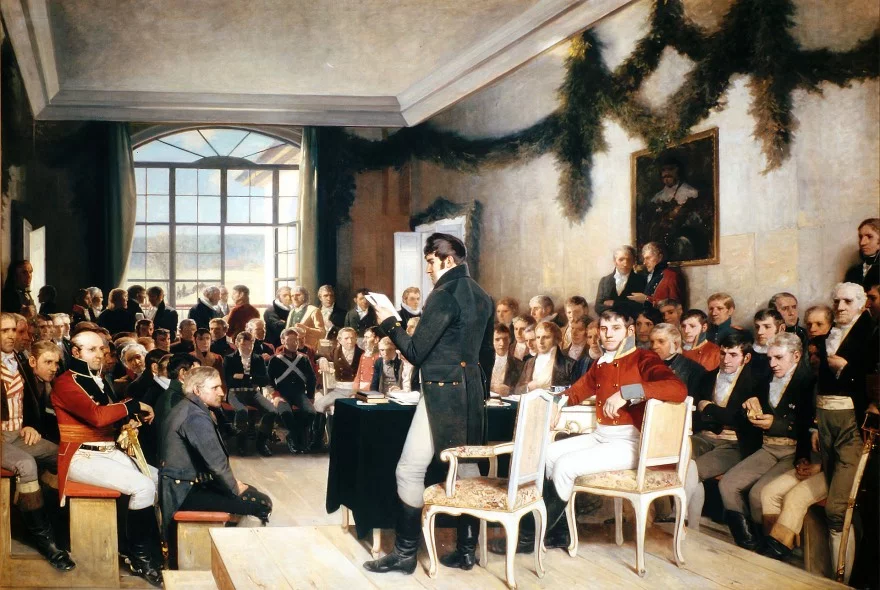
The British and Russians were publicly opposed to Norwegian independence but their desire to actually back up Sweden with manpower and resources was very low. In June, however, Russia, Prussia, Austria and Britain sent emissaries to Norway to inform them that they should accept Swedish rule or face war with the whole of Europe.
The emissaries also rejected Christian Frederik’s proposal that the union be based on Norway’s new constitution. On July 29th, Swedish forces invaded Norway.
War and peace
The war was swift and decisive, though it’s not clear who won! By August 10th, Crown Prince Bernadotte proposed a cease-fire as it was inevitable that the Norwegian army was no match for the military might of Sweden, backed up by her allies.
Norway, however, had managed to resist just enough to demonstrate to Bernadotte that the country was serious about independence. Bernadotte’s proposal included one major concession – the Eidsvoll convention and the new constitution would form the basis of the union between the two countries. This meant that Norway never had to accept the Kiel Treaty.
Negotiations started in Moss and the official ceasefire, the Convention of Moss, was signed on August 14th after a few days of intense negotiation. Sweden had given up any hope of incorporating Norway as a province and Norway’s independence, as a partner in a personal union, would be respected.
The Norwegian people took the news hard and maintained their resistance. It wasn’t until October 10th that Christian Frederik formally abdicated and handed executive powers to the newly established parliament, the Storting. With a series of votes, the Storting handed as little power over to Sweden as possible; just enough to establish the personal union.
A Constitution Day crisis
The early years of the union were mostly characterised by arguments about what was covered by the union. Sweden was effectively trying to tighten the union and bring the countries closer. Norway, meanwhile, was trying to keep the two countries as separate and independent as possible.
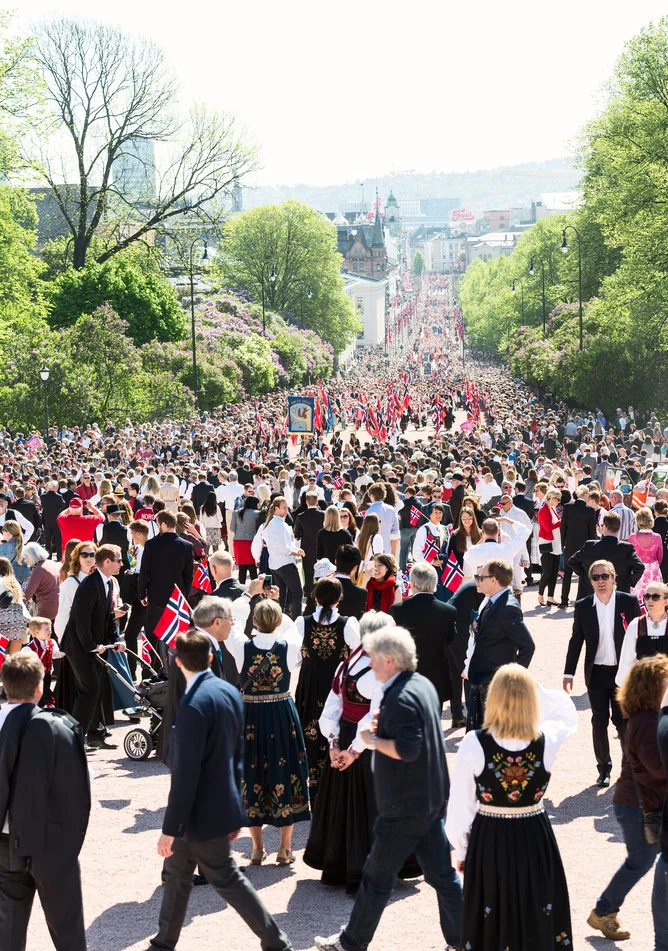
Slowly, over several years, all the questions about sovereignty and national symbols were settled to the approval of both sides. One huge bone of contention was the Norwegian desire to celebrate May 17th as the National Day.
It’s difficult to have a kind of ‘independence day’ when you’re part of a union. It makes it look very much like you don’t want to be a part of that union! Celebration of May 17th started spontaneously at some point by students.
King Charles XIV John took the view that the celebration was a celebration of the election of the insurrectionist Christian Frederik and after tolerating them for a while, banned all celebrations in 1828. As he soon found out, banning things is one of the best ways to make them more popular.
The matter came to a head on May 17th 1829 with the Battle of the Square in Christiania. Protestors and Police clashed. The Police Chief read the Riot Act, which the gathered crowd ignored, and so the cavalry entered the square and started beating protestors violently.
They ultimately won the day but the damage to relations between the two countries was so great that King Chares XIV John agreed to lift the ban. Thereafter celebrations of the day grew every year and May 17th is still marked to this day as Norway’s National Day.
Decline and fall of the Swedish empire
Over time, the Norwegian people softened in their attitude to Sweden and King Charles softened in his attitude towards Norway and its people. During the reign of Oscar I, starting in 1844, relationships with Denmark improved and a wave of Scandinavism – the idea that Scandinavia should be one country – washed over the region.
As with all unions, tensions remained under the surface. Sweden would always want closer ties and Norway would always want looser ties. In the end it was King Charles XV who started the decline.
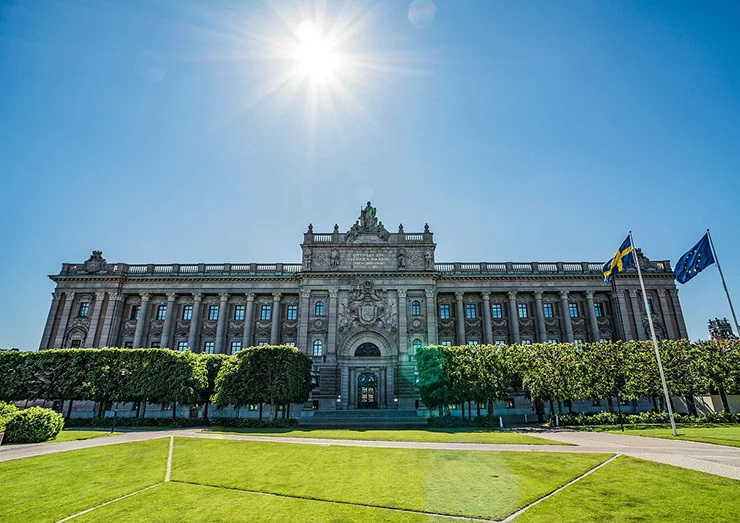
The King had promised to support Norway in the abolition of the unpopular role of viceroy. When he returned to Sweden, there was such nationalistic fervour, accusing Norway of revolution, that the King changed path and promised not to sanction the law. This clearly showed the Norwegians that the King would always take the side of Sweden against them.
Ultimately, it was wrangling about foreign affairs that finally ended the union. Norway needed consuls who could stand up for its needs and Swedish consuls would or could not do that. No agreement could be reached, and the Norwegian government resigned.
Read more: The Royal Family of Norway
The King refused to accept because he couldn’t form another government and the Storting then declared he had ‘ceased to act as King of Norway’ and thus declared independence. A referendum was held, which won with 99.95% of the vote.
The Act of Union was revoked on October 16th and 10 days later King Oscar II renounced all claims to the throne. A second referendum confirmed that the country wanted a Monarchy rather than a Republic and the Storting invited Prince Carl of Denmark to take up the position.
On November 25th 1905, 91.5 years after Norway first declared independence, Prince Carl arrived in Christiania and took the throne as King Haakon VII.

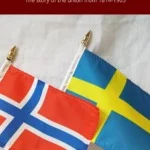

In the late middle ages were there “clearances” of Norwegian ownership in favor of Danish Noblemen? I heard this discussed during a 17th of May celebration in Santa Monica in the 1960’s.